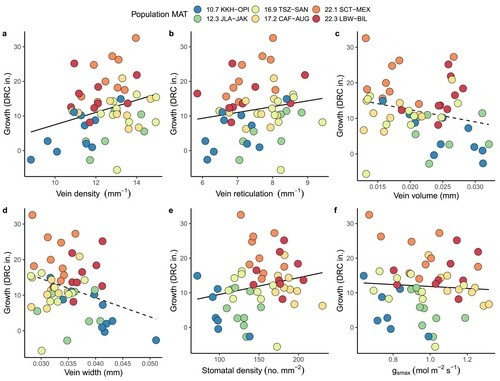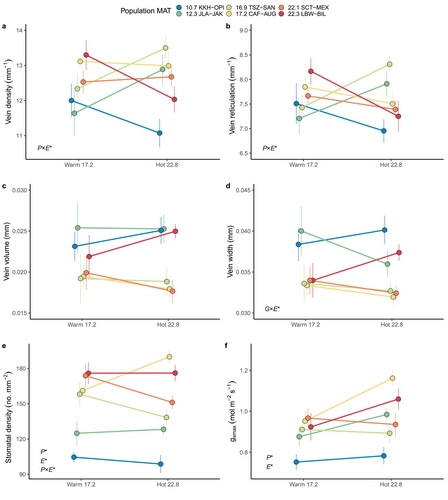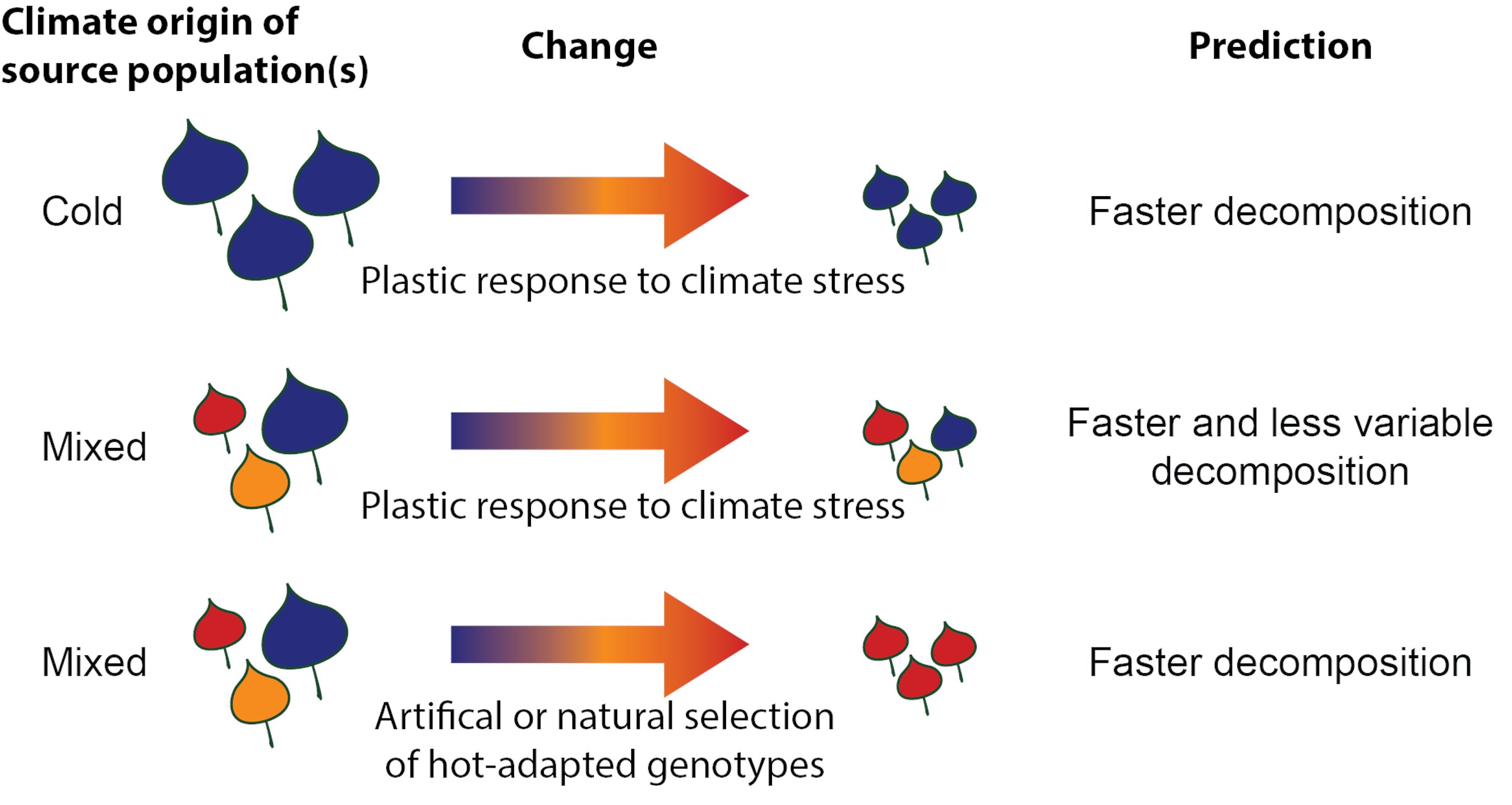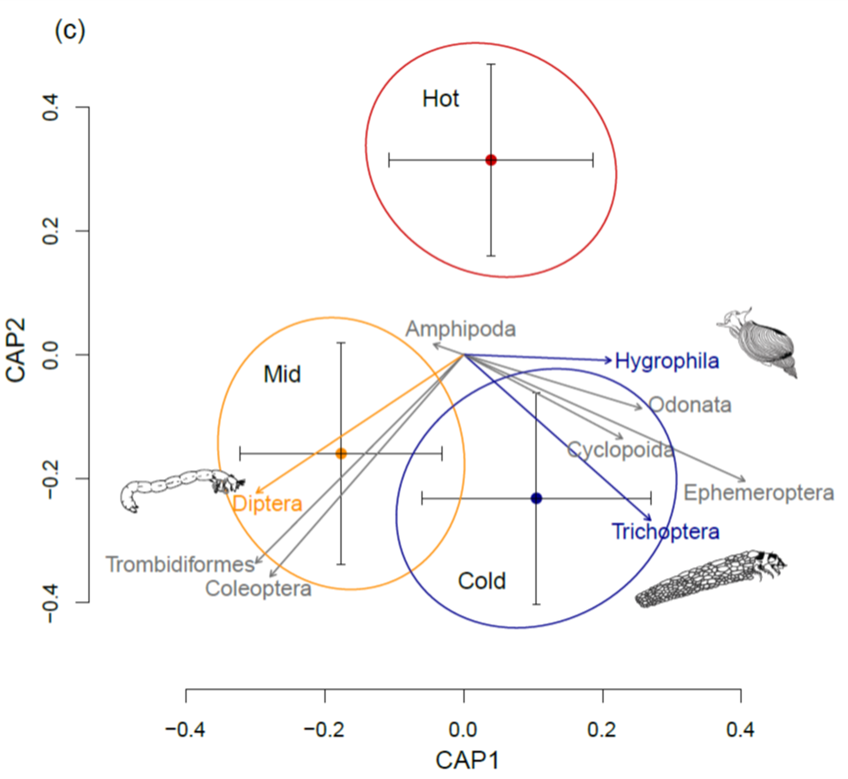



Dr. Jackie Corbin, who now works on actually applying restoration principles with NRCS, used hyperspectral reflectance of Fremont cottonwood leaves growing in multiple common gardens and at home to detect genetic, environmental, and gxe effects on spectral traits https://doi.org/10.1111/pce.15263. She showed we can detect a tree’s population of origin with high accuracy, even in a controlled environment, and also that common spectral indicators of photosynthetic capacity decline as trees are planted in hotter temperatures than they have evolved to deal with. Read all about it, open access in Plant, Cell, and Environment.
Congrats to former Lindroth Lab postdoc Mike Eisenring (now a Researcher at the Swiss Federal Institute for Forest, Snow and Landscape Research) on this great new paper about intraspecific variation in phenotypic plasticity! Mike found that cottonwood trees from cooler climates show higher plasticity in defensive chemistry in response to both climate and herbivory, until you stress them out with a combination of both. Great collaboration between UW Madison and cottonwood ecologists at the NAU Center for Adaptable Western Landscapes, supported by our Bridging Ecology and Evolution NSF grant!
Eisenring, M., R.J. Best, M.R. Zierden, H.F. Cooper, M.A. Norstrem, T.G. Whitham, K. Grady, G.J. Allan, and R.L. Lindroth. 2022. Genetic divergence along a climate gradient shapes chemical plasticity of a foundation tree species to both changing climate and herbivore damage. Global Change Biology. open access link
Master’s student Iris Garthwaite defended her MS and ALSO was awarded an NSF GRFP and an NAU Presidential Fellowship this week! Big things ahead! We’re so lucky to have you in the lab Iris!

J.R. Jeplawy, H.F. Cooper, J. Marks, R.L. Lindroth, M.I. Andrews, Z.G. Compson, C. Gehring, K.R. Hultine, K. Grady, T.G. Whitham, G.J. Allan, and R.J. Best. 2021. Plastic responses to hot temperatures homogenize riparian leaf litter, speed decomposition, and reduce detritivores. Ecology 102:e03461. link
Riparian ecosystems are shaped by leaf litter traits that depend on both local adaptation and plasticity across a climate gradient. MS student Joann Jeplawy used 6 populations and 3 common gardens of Fremont cottonwood across Arizona.
She found that trees growing in hot conditions made small and fast-decomposing leaves, whereas cold conditions allowed trees from different origins to express a wide range of traits and decomposition rates.



So great to work with Hillary Cooper and other folks from the Cottonwood Ecology Group at NAU (Kevin Grady, Jacob Cowan, Gerard Allan, and Tom Whitham) on Hillary’s great new paper about trait plasticity across a steep climate gradient. Check out her final figure about how plasticity could alter how far away in temperature space you can plant a tree and have it thrive!

You must be logged in to post a comment.